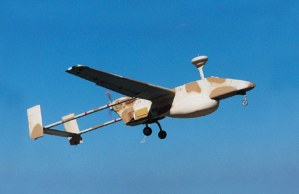
Russia’s war on Ukraine has been paralyzing.
It’s paralyzing because Russian media outlets covering the Russian Federation Armed Forces have spent 166 days doing two things. Either spewing Kremlin propaganda about the “special military operation.” Or not saying or writing anything true about the Russian military for fear of prosecution, fines, and prison time for disseminating “fake” information or “discrediting” the armed forces.
Needless to say, it’s crimped the “bread and butter” of these posts.
Be that as it may, Oleg Falichev wrote last week for NVO about Russia’s faltering war on Ukraine. Falichev’s a former KZ correspondent. But not really notable.
Without meaning to, Falichev shows how deflated Kremin loyalists are. His summation of the war indicates how large, perhaps insurmountable, are the difficulties Russia faces in its war on Ukraine. He attests that Ukraine’s artillery and missiles — Western-supplied or otherwise — are taking a toll on Russian forces. Falichev seems to have lost whatever optimism he once had for Putin’s adventure in Ukraine.
Falichev alleges that Ukraine’s foreign-made UAVs attacked a “humanitarian convoy” near Enerhodar on July 30. He describes Ukraine’s HIMARS strikes on the railroad in Zaporizhzhia oblast a day earlier. And he claims Ukraine destroyed a grain depot in Kamianka-Dniprovska. And Falichev notes the July 31 UAV strike on Russia’s BSF headquarters in Sevastopol.
He then repeats the lie about Ukraine using HIMARS to kill its own Azov battalion POWs held by the Russians in Donetsk. He also claims Ukraine may blow up the Bakhmut dam to flood the town of 35,000 and blame Russia.
Falichev notes some Russian “successes” in Ukraine. He claims Russian strikes seriously damaged Ukraine’s 30th Mechanized and 57th Motorized Rifle Brigades in Kyiv and Chernihiv oblasts, as well as the missile-artillery depot of the 81th Air-Mobile Brigade in Kostiantynivka in Donetsk.
Without providing a source, Falichev asserts Russia has destroyed 260 aircraft, 145 helicopters, and 1,631 UAVs since February 24.
But, he said, to warn of “heinous provocations and terrorist attacks on the civilian population,” Russia needs its own “eyes and ears” in space, electronic reconnaissance to intercept enemy long-range weapons and support counterbattery fire.
“We need drones of the most varied dimensions and designations. Not just strike, but reconnaissance drones with automatic and instantaneous systems for transmitting target coordinates.”
“This means we immediately need to correct not only the State Armaments Program (GPV), which was developed for us to 2030, but also the State Defense Order (GOZ-2022). They are now obviously obsolete.”
“If we don’t find answers to these questions, the provocations will continue.”
“But we still don’t have the strength to prevent such provocations. We haven’t even quickly upped the output of UAVs. Much depends on microchips, optics, engines for drones. But also on the work of various subcontractors, inertia of the bureaucratic apparatus, State Duma adoption of laws on additional GPV and GOZ financing.”
“We also don’t have reconnaissance means. We understand the Ukrainian crisis will drag out, there won’t be any lightning-fast resolution of problems. This means we have to work out long-term programs for reequipping the army, our space grouping, the Ground Troops.”
Just a reminder that “provocations” is Falichev’s term for claimed Ukrainian attacks on civilians, or perhaps for any Ukrainian resistance to Russia’s invasion.
Falichev concludes Russia needs what it currently lacks — fast and certain strikes on enemy artillery and missile systems using radar and space systems to geolocate launches by MLRS, long-range M777 howitzers, and HIMARS. Victory on the ground, he says, is connected to successful space missions, but it’s unclear how this will work out for Russia.
A Falichev interlocutor, a veteran of Air Defense Troops and BMEWS, says Russia needs medium- and long-range air defense missiles, modified to receive data from drones, to attack Ukraine’s artillery and missile launchers. Falichev says it seems a bit absurd but it’s up to “specialists to decide.”
It seems Falichev’s trying to say one very simple thing: The Russian military wishes it had GPS and GPS-enabled weapons systems.
But the fact that the “special operation” is creating problems is no longer in doubt, according to Falichev. The country’s management system and especially it OPK has to be reworked. Maybe not full mobilization but not business as usual either.
So while offering lots of doubtful assertions, Falichev makes the valid point that Moscow needs a quick answer to Western UAVs, M777, and HIMARS operated by Ukraine. But his recommendations are weak. Revamp the GPV, GOZ, and OPK? They don’t have time. Western militaries — certainly the U.S. military — adapt on the fly because they value and listen to their troops. With money tight, sanctions blocking access to Western supply chains, and other wartime exigencies, the OPK will find it virtually impossible to adapt and reequip the Russian military midstream.


